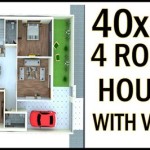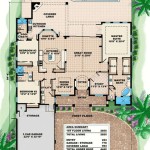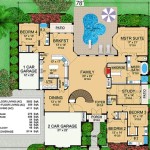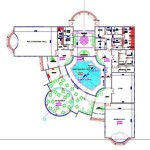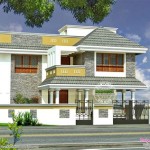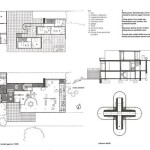Modern Greek Revival House Plans: A Synthesis of Tradition and Contemporary Living
The Modern Greek Revival architectural style represents a compelling fusion of classical aesthetics and contemporary functionality. It draws inspiration from the grandeur and symmetry of ancient Greek temples, adapting these elements to suit the needs and preferences of modern homeowners. This article delves into the key characteristics of Modern Greek Revival house plans, exploring their historical roots, defining design features, and considerations for adapting this style to contemporary construction.
The Greek Revival style emerged in the early 19th century, gaining popularity in the United States as a symbol of democracy and enlightenment, ideals associated with ancient Greece. Characterized by strong, clean lines, symmetrical facades, and prominent columns, the Greek Revival became a dominant architectural force in both residential and public buildings. The modern iteration retains these core elements while incorporating contemporary materials, construction techniques, and spatial arrangements to create residences that are both aesthetically pleasing and functionally efficient.
Essential Architectural Elements of Modern Greek Revival Homes
Several defining features characterize Modern Greek Revival house plans. These architectural elements are crucial in identifying and understanding the style, and adapting them appropriately ensures the authenticity and aesthetic integrity of a new construction or renovation project. Careful attention to proportion, detail, and material selection is critical in successfully executing a Modern Greek Revival design.
A prominent characteristic is the
symmetrical facade
. Greek Revival architecture emphasizes balance and order. Modern interpretations typically feature a central entrance flanked by an equal number of windows on either side. The overall form is usually rectangular or square, further reinforcing the symmetry and sense of stability. This balanced composition provides a sense of visual harmony and reflects the classical principles of order and proportion.Another key element is the
columnar support
. Columns are arguably the most recognizable feature of the Greek Revival style. Modern adaptations often utilize simplified versions of Doric, Ionic, or Corinthian columns, typically supporting a full or partial porch. While traditional Greek Revival homes often feature grand, full-height columns, modern designs might incorporate shorter, more streamlined columns to suit smaller scales or more contemporary tastes. The columns contribute to the overall sense of grandeur and provide a visual link to classical architecture. The choice of column style (Doric being the simplest and Corinthian the most ornate) impacts the overall character of the house, affecting the sense of formality and elegance.The
gable roof with pediment
is another signature feature. The roof is typically low-pitched and gabled, creating a triangular pediment at the front of the house. This pediment is often emphasized with decorative molding or a simple triangular window. The pediment adds visual interest to the facade and contributes to the overall classical aesthetic. In modern interpretations, the scale and detailing of the pediment may be simplified to align with contemporary design sensibilities, but its presence remains a defining characteristic of the style.Furthermore, the
window and door detailing
is integral to the style. Windows are typically rectangular and symmetrically arranged, often with multi-pane glass. The front door is usually the focal point of the facade, often framed by pilasters or a decorative surround. Sidelights and a transom window above the door can further enhance the entrance. The detailing around the windows and doors contributes to the overall sense of formality and elegance, reflecting the classical emphasis on proportion and ornamentation. Modern interpretations often incorporate larger window sizes to maximize natural light, while still maintaining the symmetrical arrangement and classical detailing.Adapting Greek Revival Plans for Modern Lifestyles
While adhering to the architectural principles of the Greek Revival style, modern house plans must also cater to contemporary living needs. This requires careful consideration of spatial arrangements, material choices, and energy efficiency. The goal is to create a home that is both aesthetically pleasing and functionally efficient, seamlessly blending historical character with modern comfort.
One crucial aspect is the
open floor plan
. Traditional Greek Revival homes often featured separate, enclosed rooms. Modern floor plans, however, typically incorporate more open spaces, allowing for greater flexibility and interaction. This can be achieved by combining the living room, dining room, and kitchen into a single, flowing space. The open floor plan promotes a sense of spaciousness and facilitates modern lifestyles, while the exterior retains the classic Greek Revival aesthetic.Another vital consideration is
maximizing natural light
. Modern homeowners prioritize natural light. This can be achieved by incorporating larger windows, skylights, and light wells. While maintaining the symmetrical arrangement of windows on the facade, modern designs can incorporate strategically placed windows to maximize sunlight penetration. Natural light not only enhances the ambiance of the interior but also contributes to energy efficiency by reducing the need for artificial lighting.The implementation of
modern materials and technologies
is also vital. While traditional Greek Revival homes were constructed using materials such as wood and brick, modern designs can incorporate materials such as concrete, steel, and engineered wood products. These materials offer greater durability, energy efficiency, and design flexibility. Furthermore, modern technologies such as smart home systems, solar panels, and geothermal heating can be seamlessly integrated into a Modern Greek Revival home, enhancing its functionality and sustainability.Attention to
energy efficiency
is paramount. Modern building codes and environmental concerns necessitate energy-efficient design. This can be achieved through the use of insulation, energy-efficient windows and doors, and sustainable building materials. Proper insulation helps to reduce heating and cooling costs, while energy-efficient windows and doors minimize heat loss and gain. Sustainable building materials, such as recycled content products, contribute to a more environmentally friendly home.Key Considerations for Choosing a Modern Greek Revival House Plan
Selecting the right Modern Greek Revival house plan involves careful consideration of various factors, including site conditions, budget constraints, and personal preferences. It is crucial to work with an architect or designer who understands the nuances of the style and can translate the homeowner's vision into a functional and aesthetically pleasing reality.
One must thoroughly assess the
site conditions
. The topography, orientation, and surrounding landscape can significantly impact the design of the house. A sloped site, for example, may require a different foundation design than a flat site. The orientation of the house should be carefully considered to maximize sunlight exposure and minimize heat gain. The surrounding landscape can also influence the overall design, dictating the placement of windows, doors, and outdoor living spaces.Effective
budget management
is crucial. Building a Modern Greek Revival home can be a significant investment. It is important to establish a realistic budget at the outset and to carefully manage costs throughout the construction process. Working with an experienced contractor and making informed material selections can help to keep costs under control. It is also important to factor in the long-term costs of ownership, such as energy bills and maintenance expenses.It is necessary to consider
personal preferences and lifestyle
. The house plan should reflect the homeowner's individual needs and preferences. Factors such as the number of bedrooms and bathrooms, the size of the kitchen, and the layout of the living spaces should be carefully considered. The house should also be designed to accommodate the homeowner's lifestyle, providing spaces for both relaxation and entertainment. A well-designed home should be both aesthetically pleasing and functionally efficient, seamlessly blending historical character with modern comfort.The
selection of appropriate materials and finishes
will have a profound effect on the overall design. The materials and finishes should be consistent with the traditional Greek Revival style while also meeting the needs of modern living. For example, brick or stucco exteriors can be combined with wood trim and detailing. Interior finishes should be carefully selected to create a cohesive and harmonious design. Attention to detail is crucial in achieving a successful Modern Greek Revival home.Lastly, it is prudent to ensure
compliance with local building codes and regulations
. Before beginning construction, it is important to obtain all necessary permits and approvals. The house plan must comply with all applicable building codes and regulations, including those related to safety, energy efficiency, and accessibility. Working with a qualified architect or contractor can help to ensure that the project meets all necessary requirements and avoids costly delays or penalties.
Greek Revival Style With 4 Bed Bath Sims House Plans Dream Blueprints

House Plan 68466 Greek Revival Style With 2095 Sq Ft 3 Bed 2

Our Classic Greek Revival Skip Tuminello Southern Living House Plans Farmhouse Floor

House Plan 98220 Greek Revival Style With 3093 Sq Ft 4 Bed 3

Greek Revival Home With Traditional Interiors Bunch Interior Design Ideas

Plan 68466 Greek Revival Style With 3 Bed 2 Bath Car Garage

Greek Revival Home Plan 81037w Architectural Designs House Plans

Classical Greek Revival House Floor Plans Designs

Characteristics Of Greek Revival Home Plans

Popular House Styles From Greek Revival To Neoclassical Architectural Digest

